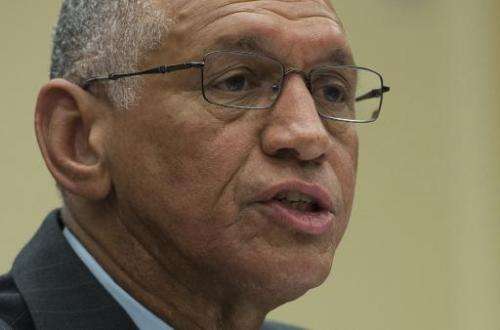NASA hails spending boost under Obama budget proposal

NASA on Monday hailed a proposal by President Barack Obama to boost spending for the US space agency and announced plans for a mission to explore Jupiter's moon, Europa.
The agency's administrator, Charles Bolden, said at the Kennedy Space Center in Florida that NASA has made strides in the journey toward Mars—where a human mission is planned for 2024—with a "near-flawless" flight test of its new Orion deep space vehicle.
He also heralded success in handing over International Space Station resupply missions to commercial partners, with the first crew flights on the horizon in 2017.
Although Obama's overall $4 trillion US budget plan faces an uphill climb through Republican-controlled Congress, support for the space agency tends to reach across bipartisan lines.
"President Obama is proposing a fiscal year 2016 budget of $18.5 billion dollars for NASA, building on the significant investments the administration has made in America's space program over the past six years," Bolden said in an address broadcast online and shown at NASA locations across the United States.
"That's a half-billion-dollar increase over last year's enacted budget, and it is a clear vote of confidence in you –- the employees of NASA –- and the ambitious exploration program you are executing."
Bolden said key areas of focus for NASA are continuing to prepare a manned mission to Mars, as well as developing advanced solar electric propulsion systems needed for an asteroid redirect mission.
"We have identified several asteroids that could be good candidates and will make a decision soon on a capture option."
Bolden also touched on a new mission in the works for Jupiter, but gave few details.
"Looking to the future, we're planning a mission to explore Jupiter's fascinating moon Europa, selecting instruments this spring and moving toward the next phase of our work."
In 2011, NASA sent a billion-dollar solar-powered spacecraft called Juno on a five-year journey to Jupiter.
Juno, which should arrive in July 2016, was launched just over two weeks after the final space shuttle mission returned to Earth and the 30-year program was shuttered for good.
The European Space Agency already has an unmanned spacecraft in the works to explore Jupiter's icy moons, including Europa.
The Jupiter Icy Moons Explorer, or JUICE, will be launched in 2022, arriving at Jupiter in 2030 for a mission lasting three years.
© 2015 AFP



















